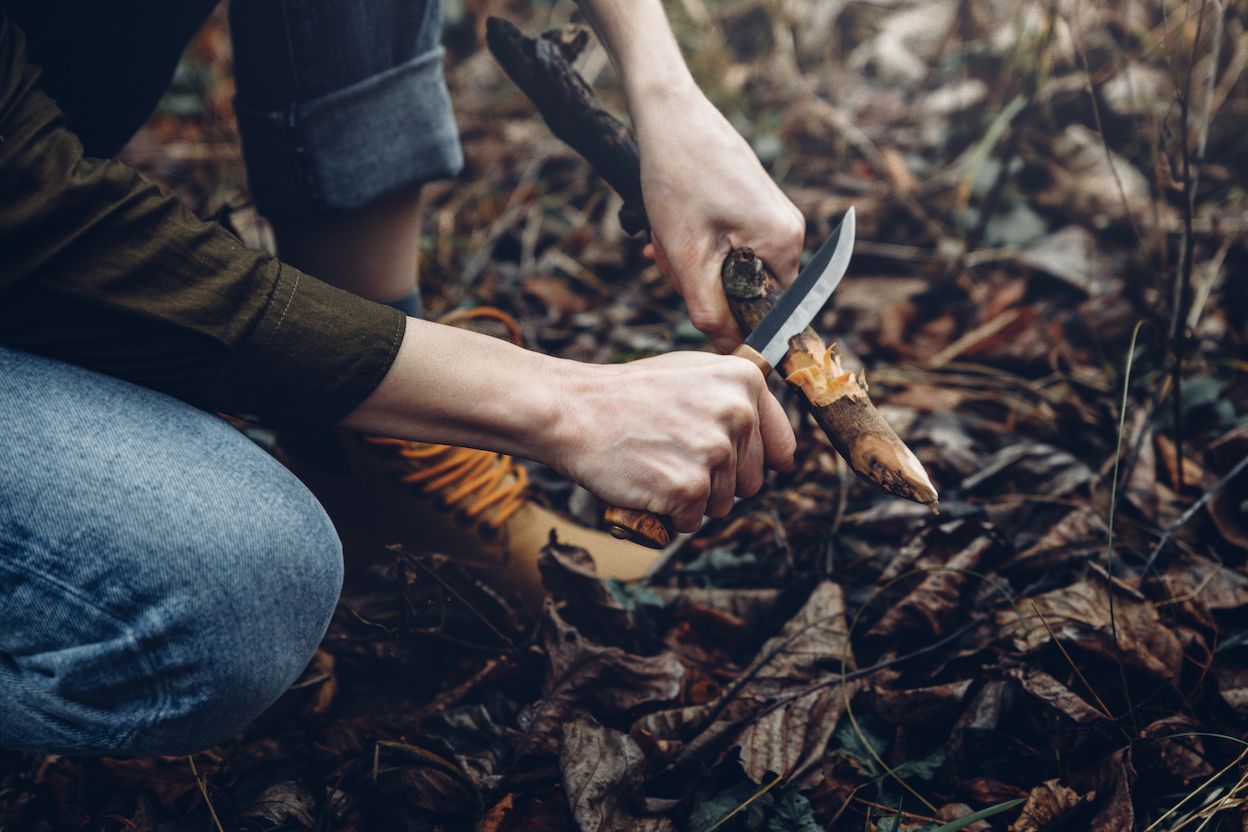The word ‘bushcraft’ conjures up an image of a Ray Mears-type survival expert, face smeared with camouflaging mud. Homemade bow held aloft, he tracks animals through the forest that he’ll later roast over a campfire, before going to bed in a brush shelter that he built himself. But this isn't quite what it's all about.
Put very simply, bushcraft is a set of skills and knowledge that can be used to survive in the outdoors. Building a shelter, creating a fire, foraging for food and collecting water are all essential bushcraft skills. Others include making cordage, plant identification and natural navigation. And there are also a whole lot of other skills which fall under the umbrella too. So what exactly is bushcraft?
“There are people doing degrees in bushcraft who still don't understand the answer to that question,” says Lizzy Maskey, a bushcraft expert and instructor.
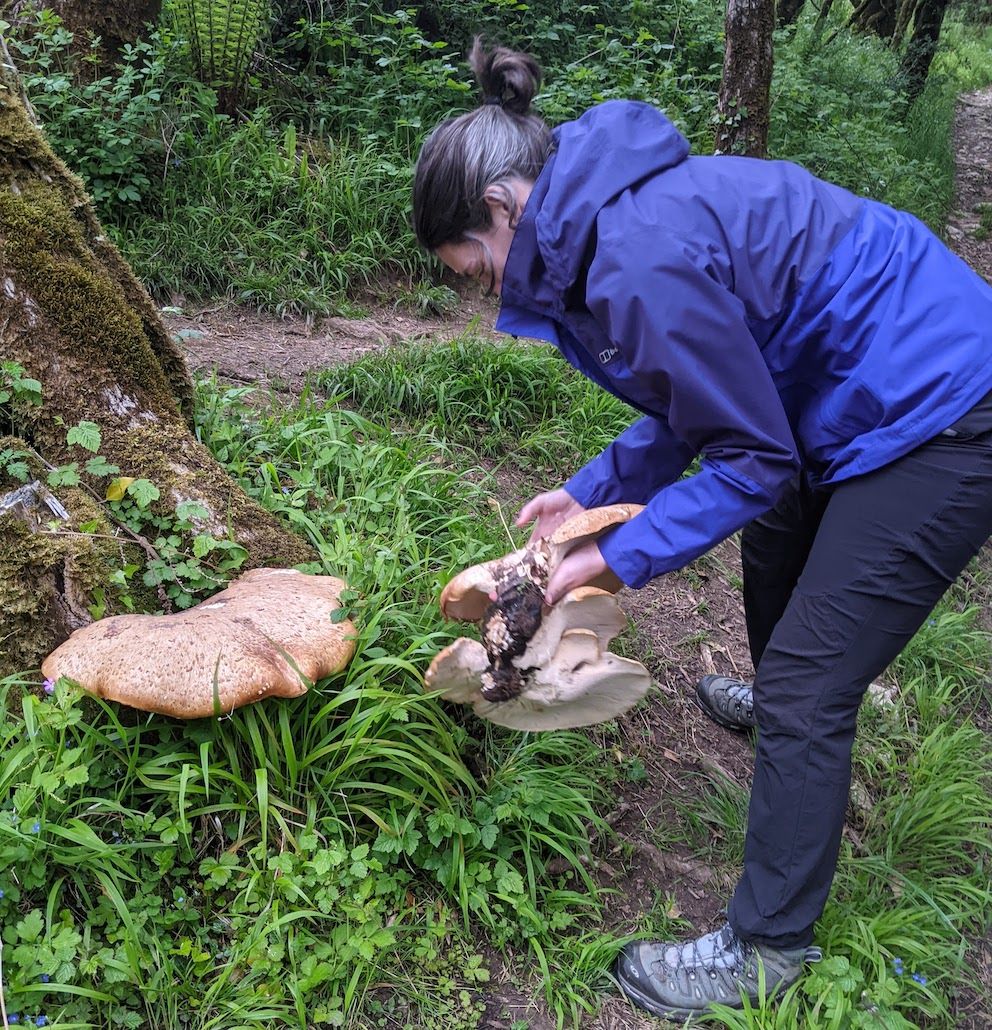
What is bushcraft?
Lizzy is the founder of Pippin & Gile, a company offering bushcraft courses in Pippin Wood (on the Welsh Borders), Gilestone Wood (on a remote farm in the Brecon Beacons) and their South London Woods, on the green belt between Surrey and Croydon.
“There's a lot around the history of bushcraft which isn’t clear. Even just the word ‘bushcraft’. We don’t actually have bush in the UK. There’s a lot of dubious colonial links to the term,” she explains.
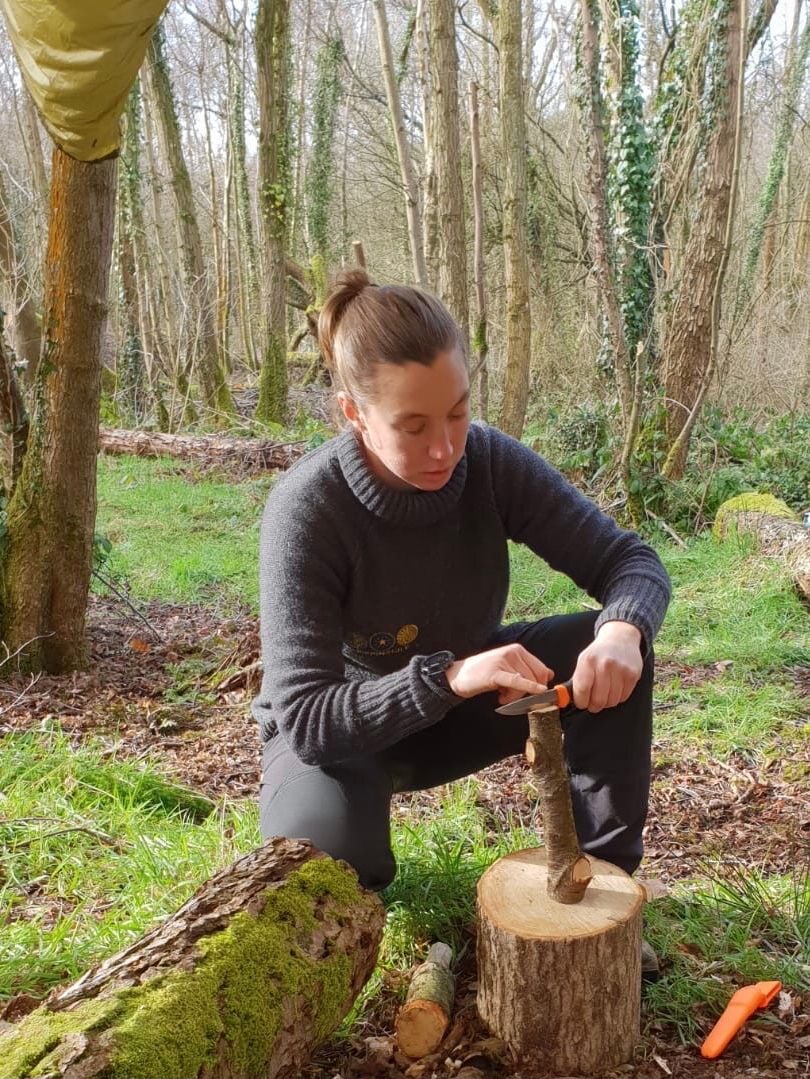
Bushcraft originates from a curious patchwork of sources. It draws upon contemporary recreations of stone age processes, military survival skills, practices from colonised cultures, humanistic therapies and more.
Survival is more about mastering the environment, whereas bushcraft is about working with the environment.
For Lizzy, however, bushcraft is about your relationship with the natural world.
“It’s that interest in the outdoors. It’s looking at your environment and thinking, ‘what can I use this for? How can I adapt and make use of it?’ But it’s also about understanding the interconnectedness of the natural world. If I wanted to track owls, my first thought would be to look for mouse and vole signs, because that’s where the predators will be,” she says.
Bushcraft vs Survival: What’s the Difference Between the Two?
Bushcraft and wilderness survival are often viewed as interchangeable, but there are differences.
“It's a similar skillset but it's a completely different mindset,” Lizzy explains. “Survival is more about mastering the environment, whereas bushcraft is about working with the environment. That's where bushcraft really comes into its own. You're interpreting the environment and utilising it, rather than attacking it with a machete and an axe.”
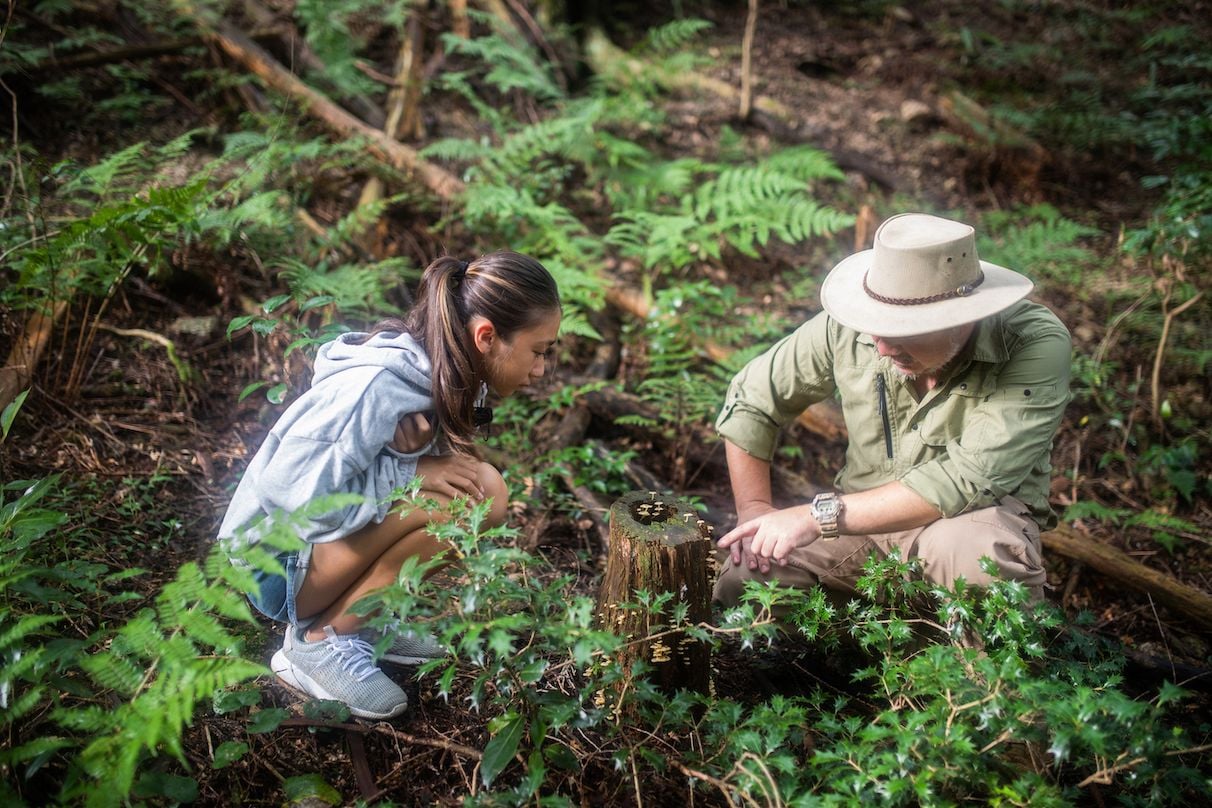
While survival skills are all about surviving (naturally), to Lizzy, bushcraft is about thriving in the outside world. “I like the fact I can go outside and within 10 minutes manage to come up with quite a tasty salad, without much time and effort,” she says.
Bushcraft doesn’t have to involve multi-day adventures battling the elements. It can be something as simple as building a den in the woods, or starting a fire using a ferro rod on your next camping trip.
“We say we don't use bushcraft on a regular basis, but how many families have gone out blackberry picking and made a crumble? That’s bushcraft too," Lizzy says.
Bushcraft Tools
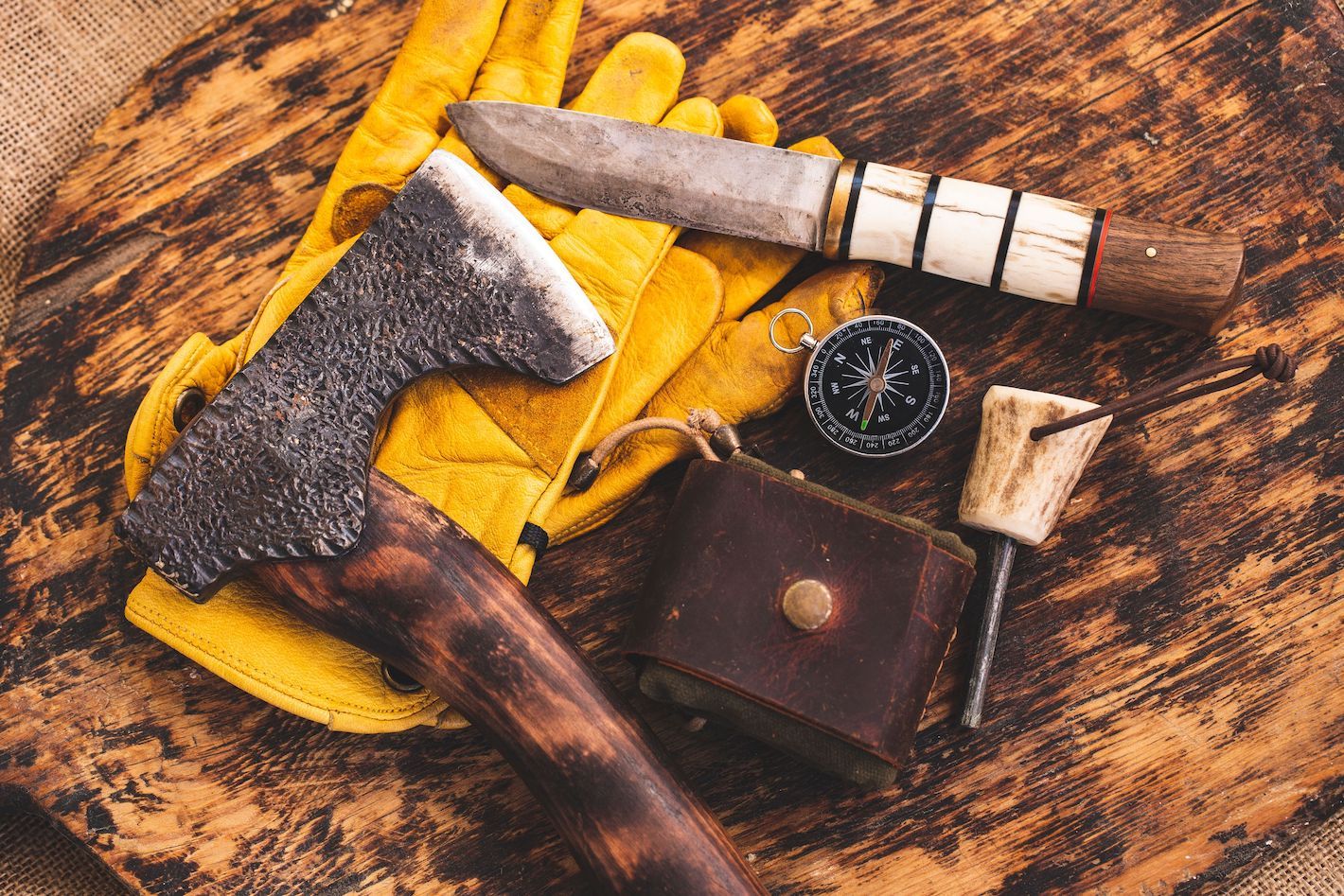
There are all sorts of bushcraft tools that you can add to your arsenal. An axe, for splitting wood. A ferro rod and steel for lighting a fire. A bushcraft knife is a vital tool, since you can use it to make other tools. This includes a bow drill - consisting of a fireboard and a spindle - which is used to make a friction fire. A metal container is also useful for boiling water and cooking food. And a tarpaulin never goes amiss.
“When I run a bushcraft course I take an awful lot of kit into the woods. But during the period of the course I'm teaching people they don't need all of it,” Lizzy says. “The most essential bushcraft tool is your brain. You can have as many tools as you like but it's the knowledge that's important. I really like the phrase, ‘knowledge weighs nothing’.”
Bushcraft Basics: Fire Building
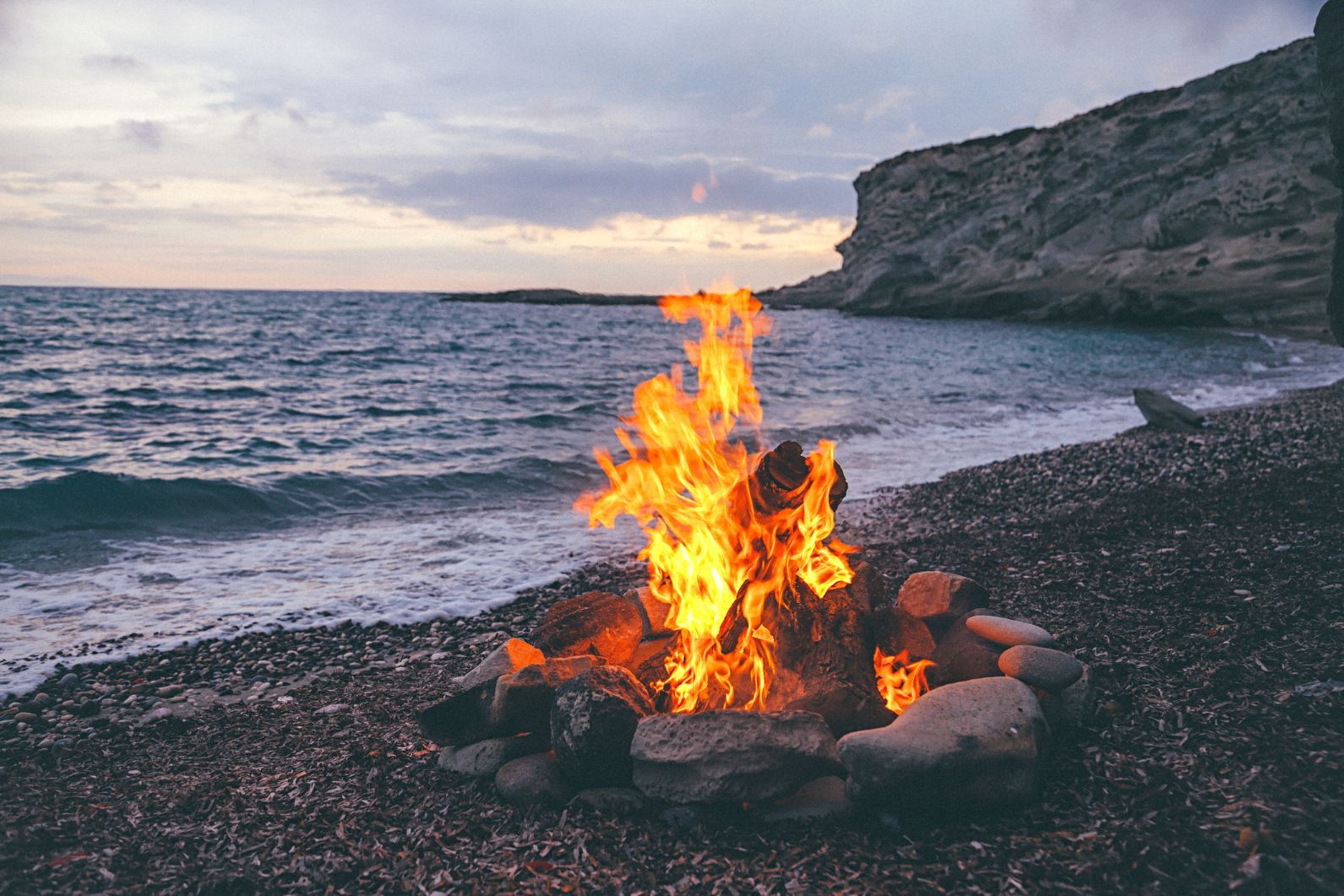
Making a fire is a fundamental bushcraft skill. Humans and their ancestors have been making controlled fires for millions of years. Control is the key, though. Making a campfire can be dangerous, irresponsible and even illegal if done in the wrong place.
In England, Wales and Northern Ireland, you are only allowed to make a campfire if you have the land owner's permission. Given that national parks, forests and all other land in England and Wales is privately-owned, this means you cannot and should not make a fire if you are wild camping.
Never light an open fire in forests, woods, farmland or on peaty ground or near to buildings or in cultural heritage sites where damage can be easily caused.
This is for safety reasons. As the National Parks website states: "Fires damage the landscape even if they are kept under control. Wildfires cause irreparable damage every year and endanger life and property. They can last for days."
Due to the demand for campfires, there are many campsites in the UK were you are allowed to make campfires.
In Scotland, open campfires are legal, but you must follow the guidance of the Scottish Outdoor Access Code, some key aspects of which are:
- Wherever possible, use a stove rather than light an open fire.
- If you do wish to light an open fire, keep it small, under control, and supervised - fires that get out of control can cause major damage, for which you might be liable.
- Never light an open fire during prolonged dry periods.
- Never light an open fire in forests, woods, farmland or on peaty ground or near to buildings or in cultural heritage sites where damage can be easily caused.
- Remove all traces of an open fire before you leave.
Once your certain that your fire is legal, and safe, Lizzy has a couple of simple fire-building tips.
“It’s important to start off with the 'why'. Am I building this fire to keep me warm? Is it to cook over? Is it just to boil a tiny pan of water or to create a smoke signal? All of these will change how I build and maintain the fire,” she explains.
The most essential bushcraft tool is your brain. You can have as many tools as you like but it's the knowledge that's important.
Lizzy’s second tip is to be prepared - gather more natural materials than you think you need. This includes tinder - flammable material that will catch the initial sparks created by your fire steel - such as papery silver birch bark, or the black fungi known as King Alfred’s cakes. Then you need smaller sticks (kindling) and larger logs.
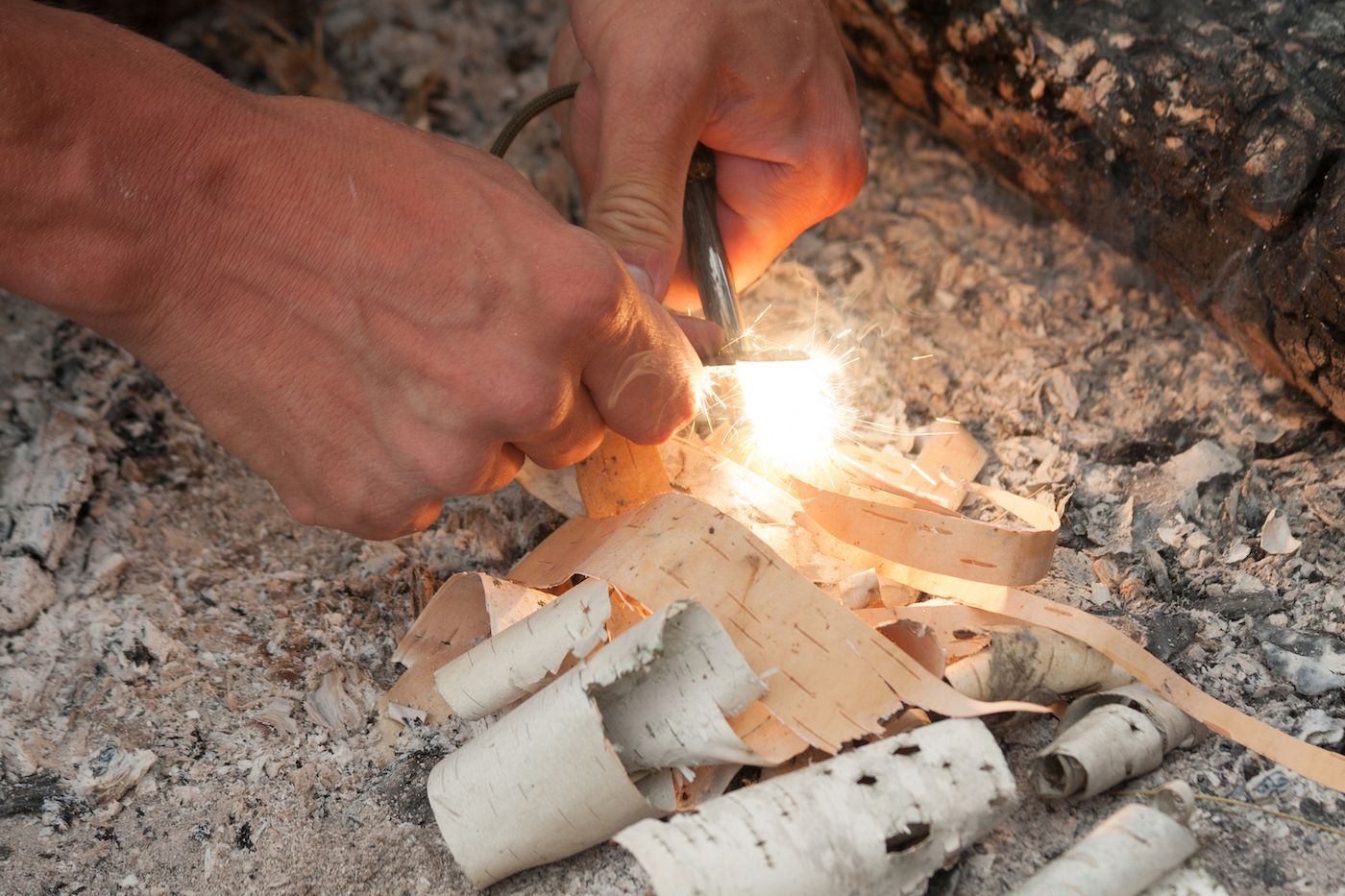
“I often compare fires to people. You can always feed a grown up baby food, but you can't feed a baby a full roast dinner,” Lizzy explains. “So gather loads of little bits, making an effort to ensure you're getting good stuff. Rather than collecting wood off the ground, collect the dead hanging wood so it's drier. If it's soaking wet, you need to be splitting things down and looking for dry inner wood.”
Make sure that your fire is stable, and never leave it unattended.
“Continuing the child analogy, if you leave the toddler alone for a while it's likely to cry and get hungry, fall over; something will go wrong with it,” Lizzy explains.
Shelter Building
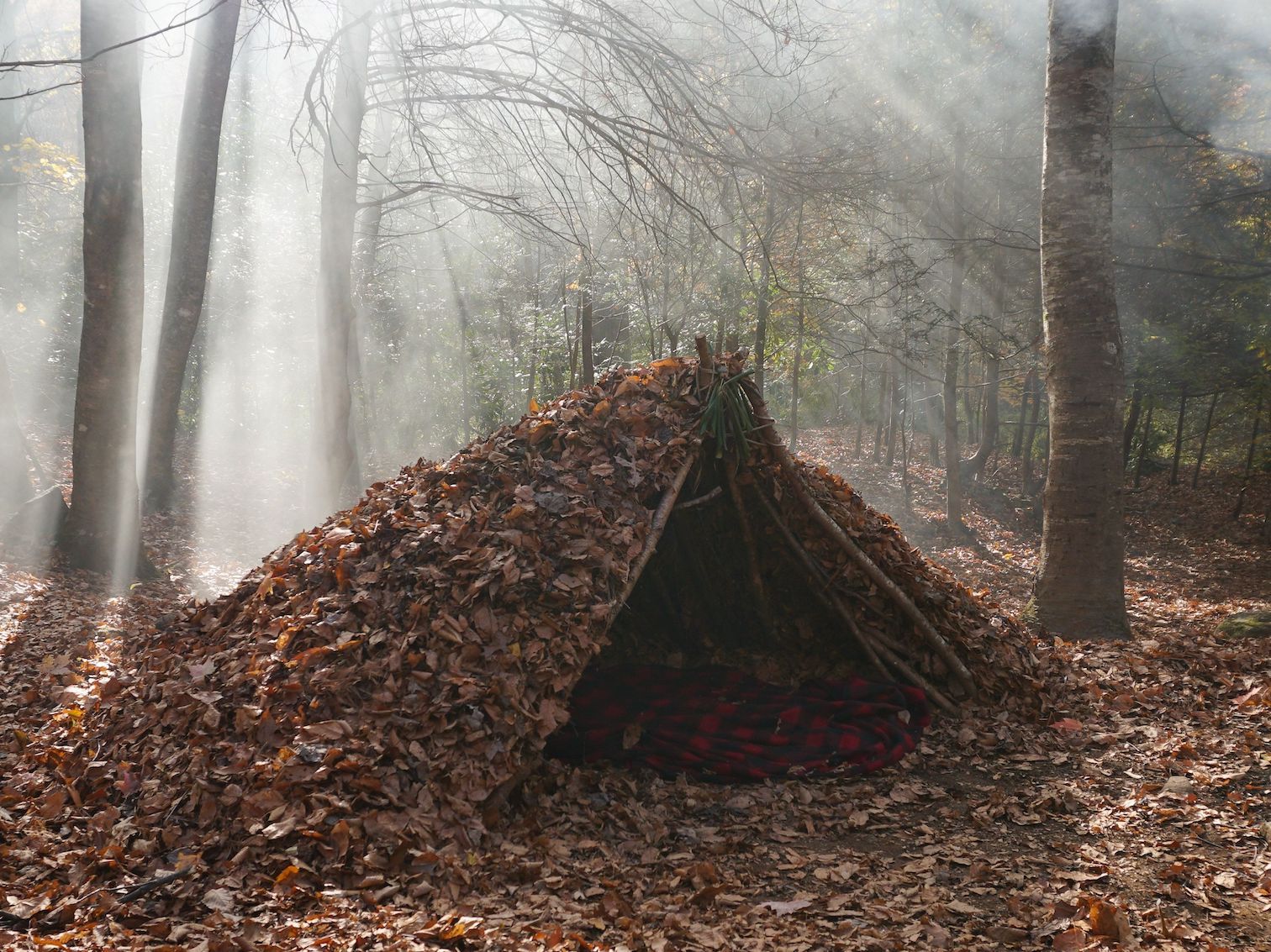
Shelter building is another bushcraft fundamental. As with making fires, Lizzy recommends starting out with the 'why'.
“What do you want to do with it; what do you want it to achieve? Is it just something to sleep under, or relax around a fire in? Is it something to keep you dry while you're cooking?” she asks.
The next step is to consider your resources. Did you come out to the woods with a tarpaulin? If not, you’ll be working solely with the materials around you.
There are many different types of shelter. Two of the most basic, however, are the A-frame and lean-to shelter.
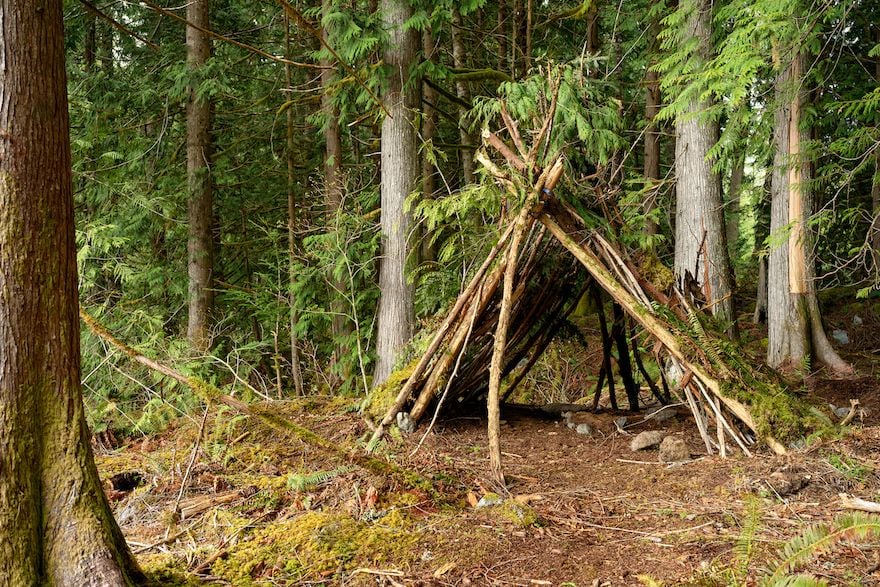
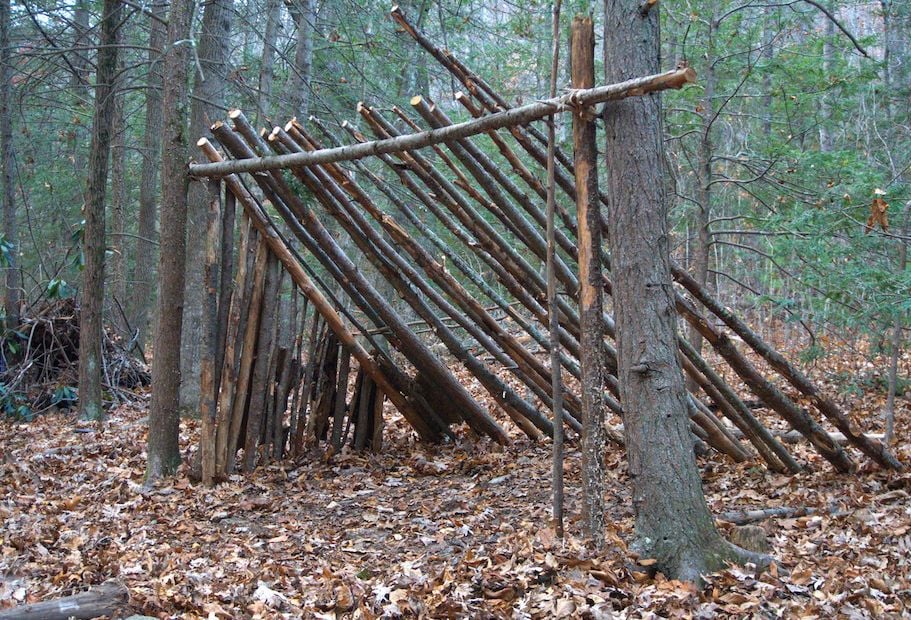
Make a lean-to shelter by lashing a wooden pole horizontally between two trees. Lean other logs against it at a 45-degree angle, to create a triangular space underneath. You can also use a tarpaulin to create a basic lean-to shelter. It’s one of the quickest construction methods and works well in nice weather, or if you just want a bit of protection while cooking.
Meanwhile, an A-frame shelter consists of sides made with crossed diagonal posts, with a ridgepole beam to provide support. It’s more labour intensive, but much sturdier, providing protection against the elements. As for how to make either shelter waterproof - Lizzy says it’s down to how much effort you’re willing to put in.
It’s down to perseverance. If you think, ‘that'll do,’ then when it rains a lot you're going to get quite wet...
"You can use bracken and you can use leaf litter to create a solid waterproof shelter that will keep out pretty much any level of rain. But it’s down to perseverance. If you think, ‘that'll do,’ then when it rains a lot you're going to get quite wet,” she says.
It's important to always remember that there are laws concerning both fire-making and wild camping in the UK. As mentioned in more detail above, in England and Wales you need the landowner's permission, while in Scotland you may light small fires if you follow the required guidelines. Responsible access to the outdoors is key.
There are also plenty of bushcraft-friendly campsites in the UK where fire and shelter building is actively encouraged.
Inspired? Check out our full range of adventure holidays now!


